Neural engineering and rehabilitation research applies neuroscience and engineering methods to analyze central and peripheral nervous system function and to design clinical solutions for neurological disorders or injury. Through the application of basic science and engineering techniques, neural engineers develop methods to analyze and control the nervous system and associated organ systems.
Research in neural engineering at Case Western Reserve University is bolstered through collaboration and proximity to world-class healthcare facilities. Faculty, research associates and students in the Department of Biomedical Engineering work in three national centers of education and research in neural engineering and rehabilitation. Our research teams collaborate with four local major medical facilities: MetroHealth Medical Center, University Hospitals Case Medical Center, Cleveland Clinic and the Louis Stokes Cleveland VA Medical Center.
The Department of Biomedical Engineering has ongoing research and applications in neural engineering and rehabilitation in several areas that allow our team to move ideas from basic science through experimental testing to clinical deployment. These areas include:
Neuromodulation – Clinical and experimental technologies for treating and managing consequences of stroke, epilepsy, pain, spinal cord injury, genitourinary function, movement disorders, autonomic functions and psychiatric disorders.
Prosthetics and Orthotics – Implanted devices to directly communicate with the nervous system functions for the control of assistive technologies, as well as provide sensory feedback in amputee prosthetics.
Neural Interfaces – Design of both stimulating and recording electrode technologies for interfacing with the nervous system. In the central nervous system, research is focused on brain computer interfaces and deep brain stimulation to restore function in patients with neurological disorders, such as paralysis. In the peripheral nervous system, novel interfacing technology targets small somatic and autonomic nerves.
Neural and Biomechanical Computation – The use of computational models to simulate the dynamics of the nervous system and musculoskeletal system during movement in order to gain insight into the underlying neural and biomechanical processes. These models are used to develop new treatments and interventions for nervous system disorders disorders, as well as to design more effective prosthetics and other assistive technologies.
Computational tools are also applied to develop and understand neural circuit function and dynamics.
Affiliated Centers
- Advanced Platform Technology Center
- Autonomic Neural Prostheses and Neurophysiology Laboratory
- Cleveland Functional Electrical Stimulation Center (FES)
- Human Fusions Institute (HFI)
- MetroHealth Rehabilitation Institute
- Neural Engineering Center (NEC)
- Neurological Surgery Imaging Laboratory
Faculty
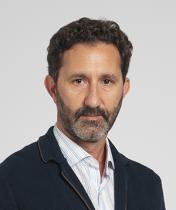
Carl Saab, PhD
Founder and Scientific Director, Cleveland Clinic Consortium for Pain
Email: saabc@ccf.org

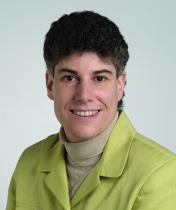

Paul D. Marasco, PhD
Associate Staff, Cleveland Clinic Lerner Research Institute
Email: marascp2@ccf.org


Abhinav Acharya, PhD
Elmer Lincoln Lindseth Associate Professor in Biomedical EngineeringBiomedical EngineeringCase School of EngineeringSchool of MedicineMemberCancer Imaging ProgramCase Comprehensive Cancer CenterEmail: abhinav.acharya@case.edu
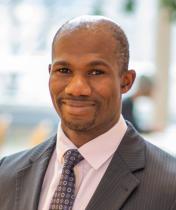
Abidemi Bolu Ajiboye, PhD
Faculty Director of Postdoctoral AffairsOffice of Faculty Advancement and Postdoctoral AffairsAssociate ChairCase School of EngineeringExecutive Vice ChairCase School of EngineeringRobert & Brenda Aiken Professor of Biomedical EngineeringDepartment of Biomedical EngineeringCase School of EngineeringSchool of MedicineEmail: abidemi.ajiboye@case.edu
Phone: 216.368.6814
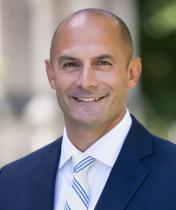
Jeffrey Capadona, PhD
Vice Provost for InnovationDonnell Institute Professor of Biomedical EngineeringDepartment of Biomedical EngineeringCase School of EngineeringSchool of MedicinePrincipal InvestigatorDepartment of Biomedical EngineeringCapadona LabSenior Research Career ScientistLouis Stokes Cleveland Department of Veterans Affairs Medical CenterEmail: jeffrey.capadona@case.edu
Phone: 216.368.5486

Hamid Charkhkar, PhD
Assistant ProfessorDepartment of Biomedical EngineeringCase School of EngineeringSchool of MedicineEmail: hamid.charkhkar@case.edu
Phone: 216.791.3800 ext. 62924
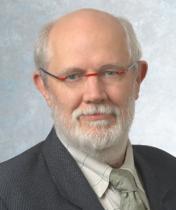
Patrick Crago, PhD
Professor EmeritusDepartment of Biomedical EngineeringCase School of EngineeringSchool of MedicineEmail: patrick.crago@case.edu

Dominique M. Durand, PhD
DirectorNeural Engineering CenterCase School of EngineeringSchool of MedicineAssociate ChairCase School of EngineeringElmer Lincoln Lindseth Professor in Biomedical EngineeringDepartment of Biomedical EngineeringCase School of EngineeringSchool of MedicineProfessorDepartment of NeurosciencesSchool of MedicineProfessorDepartment of Physiology and BiophysicsSchool of MedicineEmail: dominique.durand@case.edu
Phone: 216.368.3974

Emily Graczyk, PhD
Assistant ProfessorDepartment of Biomedical EngineeringCase School of EngineeringSchool of MedicineEmail: emily.graczyk@case.edu
Phone: 216.368.5182

Kenneth J. Gustafson, PhD
Associate ProfessorDepartment of Biomedical EngineeringCase School of EngineeringSchool of MedicineEmail: kenneth.gustafson@case.edu
Phone: 216.368.8626

Ana G. Hernandez Reynoso, PhD
Assistant ProfessorDepartment of Biomedical EngineeringCase School of EngineeringSchool of MedicineMemberCWRU Center for Imaging Research
Michael Jenkins, PhD
ProfessorBiomedical EngineeringSchool of MedicineMemberCancer Imaging ProgramCase Comprehensive Cancer CenterMemberCWRU Center for Imaging ResearchEmail: michael.jenkins@case.edu

Robert Kirsch, PhD
ChairDepartment of Biomedical EngineeringCase School of EngineeringSchool of MedicineExecutive DirectorCleveland Functional Electrical Stimulation CenterAllen H. and Constance T. Ford ProfessorProfessorDepartment of Biomedical EngineeringCase School of EngineeringSchool of MedicineEmail: robert.kirsch@case.edu
Phone: 216.368.3158

Michael Moffitt, PhD
Associate ProfessorDepartment of Biomedical EngineeringCase School of Engineering, School of MedicineEmail: michael.moffitt@case.edu
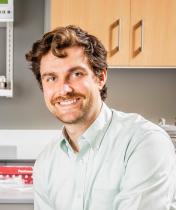
Luke Osborn, PhD
Assistant ProfessorDepartment of Biomedical EngineeringCase School of EngineeringSchool of MedicineEmail: luke.osborn@case.edu

P. Hunter Peckham, PhD
Distinguished Professor EmeritusDepartment of Biomedical EngineeringCase School of EngineeringSchool of MedicineAssociate Director of Technology TransferDepartment of Biomedical EngineeringCleveland FES CenterEmail: p.peckham@case.edu
Phone: 216.778.3480
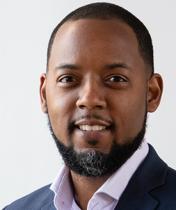
Christopher Pulliam, PhD
Assistant ProfessorDepartment of Biomedical EngineeringCase School of EngineeringSchool of MedicineEmail: christopher.pulliam@case.edu
Phone: 216.368.3138
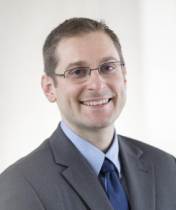
Andrew Shoffstall, PhD
Associate ChairGraduate Education CommitteeCase School of EngineeringNord Distinguished Associate ProfessorDepartment of Biomedical EngineeringCase School of EngineeringSchool of MedicineEmail: andrew.shoffstall@case.edu
Phone: 216.368.1213

Ronald J. Triolo, PhD
ProfessorDepartment of Biomedical EngineeringCase School of Engineering, School of MedicineExecutive DirectorAdvanced Platform Technology Center of the Department of Veterans AffairsEmail: ronald.triolo@case.edu
Phone: 216.791.3800

Dustin Tyler, PhD
DirectorHuman FusionsDirectorFunctional Neural Interface LabAssociate DirectorCleveland Advanced Platform for TechnologyArthur S. Holden ProfessorDepartment of Biomedical EngineeringCase School of EngineeringSchool of MedicineEmail: dustin.tyler@case.edu
Phone: 216.368.0319

Matthew Williams, PhD
Associate ChairAssistant ProfessorDepartment of Biomedical EngineeringCase School of EngineeringSchool of MedicineEmail: matthew.williams@case.edu
Research Faculty

Musa Audu
Research ProfessorDepartment of Biomedical EngineeringCase School of EngineeringSchool of MedicineEmail: musa.audu@case.edu
Phone: 216.543.5082

Chia-Chu Chiang
Research Assistant ProfessorDepartment of Biomedical EngineeringCase School of EngineeringSchool of MedicineEmail: chia-chu.chiang@case.edu
Phone: 216.368.3580

Allison Hess-Dunning, PhD
Associate ProfessorDepartment of ElectricalComputerDepartment of Electrical, Computer, and Systems EngineeringCase School of EngineeringResearch Assistant ProfessorDepartment of Biomedical EngineeringCase School of EngineeringSchool of MedicineResearch InvestigatorDepartment of Veterans AffairsLouis Stokes Cleveland VA Medical CenterEmail: allison.hess@case.edu

Grant McCallum
Research Assistant ProfessorDepartment of Biomedical EngineeringNeural Engineering CenterCase School of EngineeringSchool of MedicineEmail: grant.mccallum@case.edu
Phone: 216.368.6962

Anandakumar Shunmugavel, PhD
Research Assistant ProfessorDepartment of Biomedical EngineeringCase School of EngineeringSchool of MedicineEmail: axs2917@case.edu
Phone: 216.368.3135
Affiliated Faculty


Richard Burgess, MD, PhD
Adjunct Professor, Biomedical Engineering, Case Western Reserve University
Email: burgesr@ccf.org
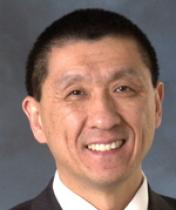
John Chae, MD
ProfessorDepartment of Biomedical EngineeringNeural Engineering CenterCase School of EngineeringVice PresidentResearch and Sponsored ProgramsMetroHealth SystemCo-DirectorMetroHealth Rehabilitation InstituteMetroHealth SystemProfessor and ChairDepartment of Physical Medicine and RehabilitationMetroHealth SystemSchool of MedicineEmail: jchae@metrohealth.org
Phone: 216.957.3623
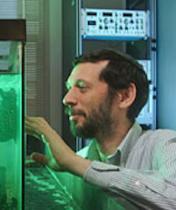
Hillel Chiel, PhD
ProfessorDepartment of BiologyCollege of Arts and SciencesProfessorDepartment of NeurosciencesSchool of MedicineProfessorDepartment of Biomedical EngineeringCase School of EngineeringProfessorNeural Engineering CenterCase School of EngineeringEmail: hillel.chiel@case.edu
Phone: 216.368.3846

Kevin Kilgore, PhD
ProfessorDepartment of OrthopaedicsDepartment of Physical Medicine and RehabilitationMetroHealth Medical CenterSchool of MedicineStaff ScientistDepartment of OrthopaedicsDepartment of Physical Medicine and RehabilitationMetroHealth Medical CenterBiomedical EngineerResearch ServicesLouis Stokes Cleveland VA Medical CenterInvestigatorCleveland FES CenterEmail: kevin.kilgore@case.edu
Phone: 216.778.3801

Dawn Taylor, PhD
Associate ProfessorDepartment of Biomedical EngineeringCleveland Clinic Lerner College of Medicine of Case Western Reserve UniversityEmail: dawn.taylor@case.edu
Nathaniel Makowski
Assistant ProfessorDepartment of Biomedical EngineeringSchool of MedicineEmail: nmakowski@metrohealth.org
James Sulzer
Associate ProfessorDepartment of Biomedical EngineeringSchool of MedicineEmail: jsulzer@metrohealth.org
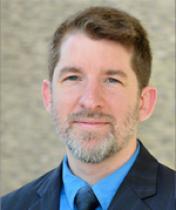
Dennis Bourbeau, PhD
Staff ScientistDepartment of Physical Medicine and RehabilitationMetroHealth SystemsAssistant ProfessorDepartment of Physical Medicine and RehabilitationMetroHealth SystemSchool of MedicineEmail: dennis.bourbeau@case.edu

